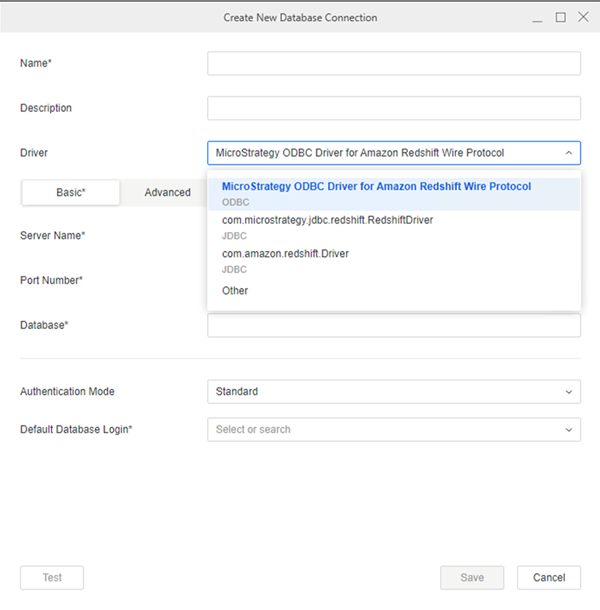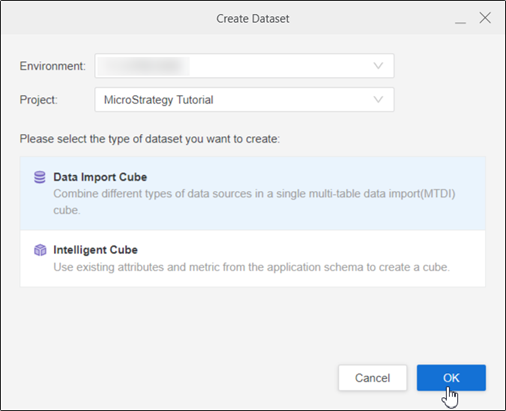Strategy One
Create a ODBC Connection for Amazon Redshift
- Workstation
- Library
Create a Data Source
-
Open the Workstation window.
-
Connect to an environment.
-
In the Navigation pane, click
 ,next to Data Sources.
,next to Data Sources. -
Search and choose Amazon Redshift from the data source list.
-
In the Default Database Connection drop-down list , click Add New Database Connection.
-
Type a Name.
-
In the Driver drop-down list, choose the Redshift ODBC driver.

-
Type a Server Name, Port Number, and Database. These values can be found in the Redshift Endpoint, it is under the following format:
<Server Name>:<Port>/<Database>. -
In the Authentication Mode drop-down in the Basic tab, choose Standard.
-
In the Default Database Login drop-down list, click Add New Database Login.
-
Type a Name, Username, and Password.

-
Click Save.
-
In the Security tab, choose a verification method based on your database from the Verification Method drop-down list.

-
Click Save.
-
In the Add Data Source dialog, enter a Name and Database Version, and optionally choose Projects for further data manipulation.
-
Click Save.
Import Data Using Your Amazon Redshift Data Source
-
Open the Workstation window.
-
Connect to an environment.
-
In the Navigation pane, click
 ,next to Datasets.
,next to Datasets. -
Choose a Project and select Data Import Cube.

-
Click OK.
-
In Data Catalog, click the Redshift data source you created, choose a namespace, and click Connect.
-
Double-click a table to add it to the right pane.
You can also hover over the Redshift data source and click Build a Query or Add free-form SQL.

-
Click Prepare Data to modify your data or click Save.
-
In Library, choose Create New > Dashboard.
-
Choose a project from the Create Dashboard in drop-down list.
-
Click Blank Dashboard.
-
In the Datasets panel, click New Data.
-
Click
 , next to Data Catalog.
, next to Data Catalog.
-
Search and choose Amazon Redshift from the data source list.
-
In Default Database Connection, click Add New Database Connection.
-
In the Driver drop-down list, choose the Redshift ODBC driver.

-
In the Basic tab, type a Server Name, Port Number, and Database. These values can be found in the Redshift Endpoint, it is under the following format:
<Server Name>:<Port>/<Database>. -
In Default Database Login, click Add New Database Login.
-
Type a Name, Username, and Password.
-
Click Save.
-
In the Security tab, choose an option in the Verification Method drop-down list based on your database settings.

-
Click Save.
-
Type a Name.
-
Click Save.
-
In Data Catalog, click the Redshift data source you created, choose a namespace, and click Connect.
-
Double-click a table to add it to the right pane.
You can also hover over the Redshift data source and click Build a Query or Add free-form SQL.

-
Click Prepare Data to modify your data or click Save.
-
Create your dashboard using your imported data.
